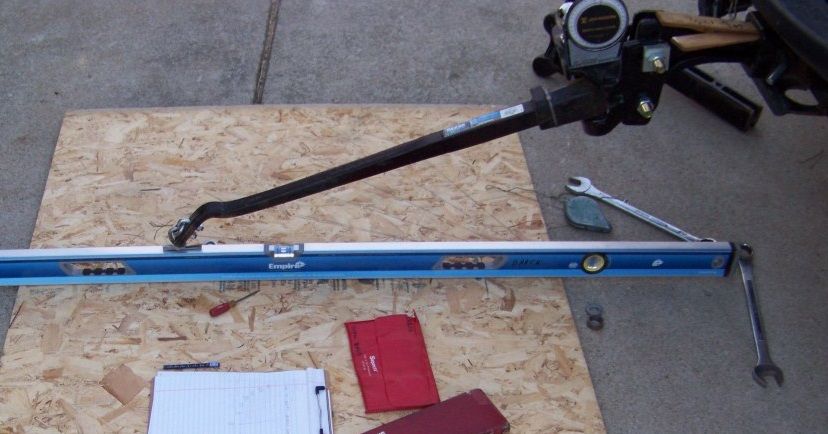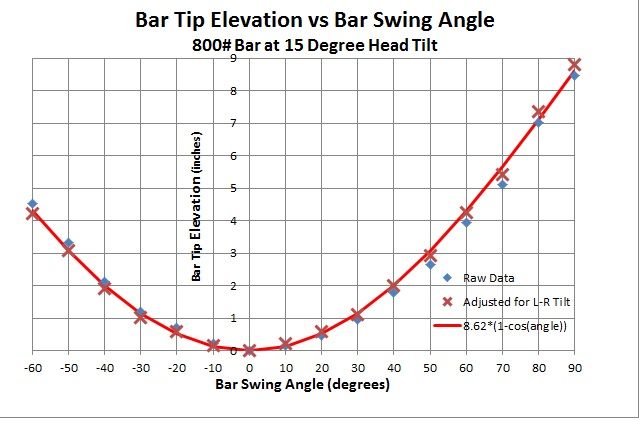Effect of TV/TT Angle on Dual Cam Bar Loads – Bar Tip Elevation vs Bar Swing AngleThe second of John's previously mentioned studies was to measure the tip height of an unloaded WD bar as the bar swings on its trunnions when the TV turns relative to the TT.
Part of John's experimental setup is shown here:

The rearward tilt of the bar's trunnion axis (15 degrees in this case) causes the bar tip to rise as the bar swings away from being parallel to the TV's longitudinal centerline.
In effect, the "rearward" (directed from front of bar to rear of bar) tilt of a bar's trunnions decreases from 15 degrees when the bar is straight behind the TV to a tilt of zero degrees when the bar is at a right angle to the TV. This will cause the bar to unload as it swings away from a zero-degree relative angle.
Results from John's measurements are shown below.

These data are for the right-side bar and the swing to the left was limited to 60 degrees due to contact between socket and ball nut.
It is important to note that, when the TT is straight behind the TV, each bar will be swung about 25 degrees away from the TT's centerline -- i.e. the left bar swing angle is -25 and the right is +25 degrees.
This means the load on the right-side bar initially will increase as the TT turns left.
Maximum load on the outside bar will occur at a turn angle of about 25 degrees when the bar becomes parallel to the TV's centerline -- i.e. its swing angle becomes zero.
If the TV turns 50 degrees left, the outside (right) bar will swing from +25 degrees to -25 degrees and its trunnion-tilt induced load will end up at the same value at which it started.
The inside bar will swing from -25 degrees to -75 degrees. This would cause the tip to rise about 5.6" -- more than enough to unload this bar.
Ron

